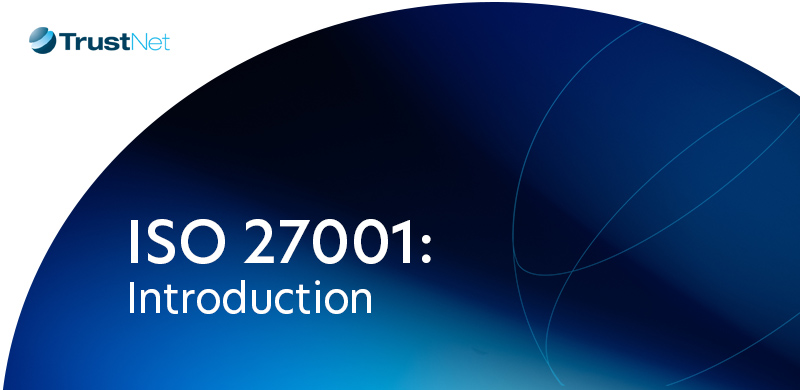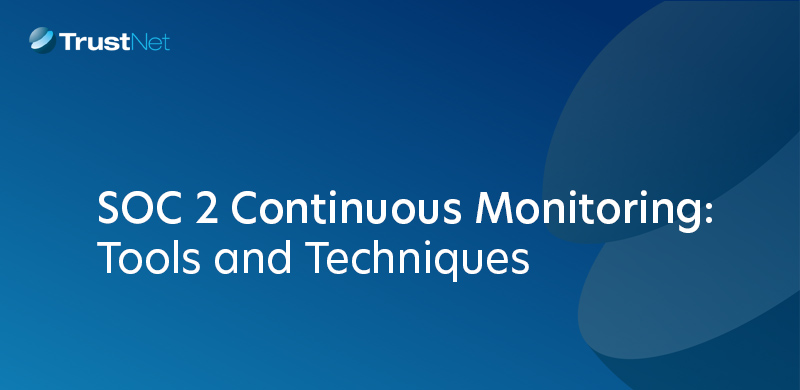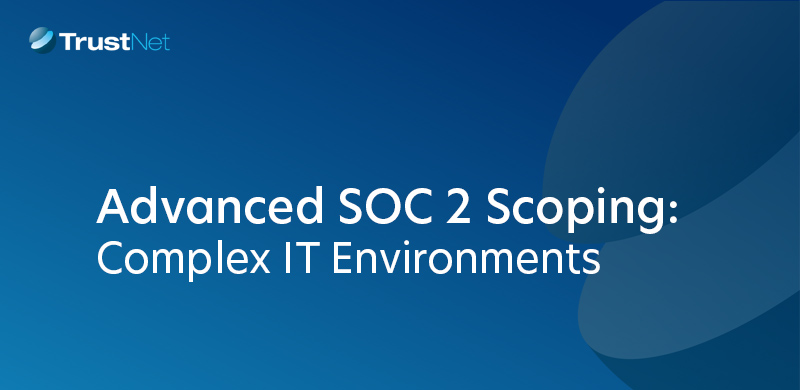Blog ISO 27001 vs. ISO 27002
ISO 27001 vs. ISO 27002

In the world of information security, two standards often come up: ISO 27001 and ISO 27002. But what exactly are they? ISO 27001 specifies the requirements for establishing, implementing, maintaining, and continually improving an Information Security Management System (ISMS).
Meanwhile, ISO 27002 dives into the best practices for implementing these controls. Understanding these standards is crucial for any organization aiming to protect sensitive data and maintain trust with clients. Let’s explore why these information security standards are so important and how they can protect your business against potential threats.
Understanding ISO 27001
ISO 27001 is the framework that lays out best practices for an organization’s overarching information security management system (ISMS). Essentially, it provides a methodology for developing and implementing an effective ISMS to safeguard information assets.
ISO 27001 Requirements
Implementing ISO 27001 involves several critical steps:
- Determine the ISMS Scope: Identify all endpoints within your environment, including routers, personnel, equipment, and processes. This helps define the scope of your ISMS. Exclude external dependencies such as third-party vendors and service personnel.
- Perform a Risk Assessment: Assess the identified elements to predict and detect vulnerabilities within your system. Utilize available tools to perform this assessment comprehensively.
- Create Policy and Procedure Guidelines: Develop guidelines to keep your ISMS in compliance with industry standards based on the assessed scope, controls, and risks.
- Delegate Tasks: Assign ISMS-related tasks to staff members who understand the system’s scope, risks, and vulnerabilities. Ensure these tasks align with ISO 27001 best practices.
- Appoint an Information Security Manager: Designate a primary contact person for information security to streamline communication with stakeholders.
- Conduct Regular Audits: Perform internal and external audits regularly to maintain compliance. Auditors provide essential feedback that can help detect potential issues before they escalate.
The ISO 27001 Certification Process
The certification process for ISO 27001 is meticulous but instrumental in fortifying your organization’s security posture. Here are the key steps:
-
- Preparation: Begin by understanding the requirements and determining the ISMS scope.
- Implementation: Develop policies, procedures, and controls based on the risk assessment.
- Internal Audit: Conduct an internal audit to identify gaps and areas for improvement.
- Management Review: Hold management reviews to ensure that the ISMS aligns with business objectives and compliance requirements.
- Certification Audit: An accredited certification body conducts an external audit. This is usually done in two stages—an initial review of documentation and a detailed review of implementation.
- Continual Improvement: Even after achieving certification, continually monitor, review, and improve the ISMS to adapt to new risks and maintain compliance.
Understanding and implementing ISO 27001 can significantly enhance your organization’s ability to manage and protect its information assets, thereby maintaining trust and credibility with clients and stakeholders.
-
For more about our ISO 27001 compliance services, Click Here
ISO 27001 Implementation
Implementing ISO 27001 begins with a thorough risk assessment. This step is crucial as it sets the foundation for your entire ISMS.
- Identify Risks: Start by identifying potential threats to your information assets.
- Evaluate Vulnerabilities: Assess the weaknesses in your current systems that could be exploited by these threats.
- Analyze Impact: Determine the potential impact of these risks on your organization. This helps prioritize which risks need immediate attention.
- Develop Risk Treatment Plans: Create strategies to mitigate identified risks. This might include implementing new security measures or updating existing ones.
By methodically assessing risks, you can proactively address vulnerabilities before they become significant issues.
Information Security Controls and the ISO 27001 Controls
Once you have assessed the risks, the next step is to implement appropriate security controls. Annex A of ISO 27001 provides a comprehensive set of controls to guide you:
Annex 5 – Organizational Controls
1. Information Security Policies
-
- Develop and implement consistent security policies.
2. Organization of Information Security
-
- Establish a framework to manage and control information security.
3. Supplier Relationships
-
- Maintain security when dealing with external suppliers.
- Define and agree on security requirements with suppliers.
4. Compliance
-
- Comply with legal, regulatory, and contractual security obligations.
- Conduct regular audits and protect personal data.
5. Information Security Incident Management
-
- Consistently manage and respond to security incidents.
- Communicate effectively about security events and weaknesses.
6. Information Security Aspects of Business Continuity Management
-
- Ensure information security is part of business continuity plans.
- Maintain availability during disruptions.
Annex 6 – People Controls
1. Human Resource Security
-
- Ensure employees understand security responsibilities before, during, and after employment.
Annex 7 – Physical Controls
1. Access Control
-
- Restrict access to authorized individuals only.
- Manage user access and responsibilities.
2. Physical and Environmental Security
-
- Prevent unauthorized physical access and damage.
- Secure areas and protect equipment.
Annex 8 – Technological Controls
1. Asset Management
-
- Identify and protect organizational assets.
- Maintain an inventory and ensure proper use.
2. Access Control
-
- Restrict access to authorized individuals only.
- Manage user access and responsibilities.
3. Cryptography
-
- Use cryptographic controls to protect data.
- Define policies for cryptographic key usage and protection.
4. Operations Security
-
- Ensure secure operation of information processing facilities.
- Protect against malware, perform backups, and monitor systems.
5. Communications Security
-
- Protect information in networks.
- Manage network security and information transfers.
6. System Acquisition, Development, and Maintenance
-
- Integrate security throughout the lifecycle of information systems.
- Manage technical vulnerabilities and support processes.
Implementing this framework helps create a resilient ISMS that adapts to evolving threats and maintains compliance with industry standards.
The Role of ISO 27002
While ISO 27001 describes the prerequisites for establishing an ISMS, ISO 27002 offers comprehensive instructions to assist companies in putting these prerequisites into practice. Think of ISO 27001 as the “what” you need to achieve, while ISO 27002 is the “how” to get there. ISO 27001 sets the framework and requirements, whereas ISO 27002 delves into best practices for choosing, setting up, and managing security controls.
Controls in ISO 27002 as Guidance for ISO 27001 Implementation
ISO 27002 offers a comprehensive set of 114 controls spread across 14 different sections. These controls serve as guidance for implementing the requirements outlined in ISO 27001. Here’s how it helps:
- Detailed Guidelines: Each control within ISO 27002 comes with specific instructions, making it easier to understand how to apply them in your organization.
- Risk Management Focus: The controls are designed to address various risks, providing a robust approach to managing information security.
- Flexibility: Organizations have the flexibility to choose which controls are most relevant to their ISMS scope, tailoring the implementation to their specific needs.
Applicability of Specific Security Controls from ISO 27002
One of the strengths of ISO 27002 is its flexibility. Not every control will be relevant to every organization, so businesses can select and apply the controls that best fit their specific context. Here is how you can determine the applicability of specific controls:
- Scope Definition: First, clearly define the scope of your ISMS. This will help identify which areas require the application of ISO 27002 controls.
- Risk Assessment: Conduct a thorough risk assessment to pinpoint vulnerabilities and threats. Use this information to decide which controls are necessary.
- Control Selection: Based on the risk assessment, choose the controls from ISO 27002 that will mitigate identified risks. This could include controls related to access management, cryptography, physical security, and more.
- Implementation and Monitoring: Implement the selected controls and continuously monitor their effectiveness. Adjust as needed to address new risks or changes in the organizational environment.
This tailored approach ensures that your organization’s information security measures are both effective and efficient, addressing the specific risks and needs of your business.
Auditing and Certification
Internal audits are a crucial part of ensuring ongoing compliance with ISO 27001. They help you identify gaps in your Information Security Management System (ISMS) before they become serious issues. Here is how to approach internal audits:
-
- Scheduled Reviews: Plan regular audits at intervals that make sense for your organization. This keeps your ISMS up-to-date and effective.
-
- Audit Team: Ideally, use an independent team or individuals who are not directly involved in the areas being audited. This helps maintain objectivity.
-
- Audit Scope: Clearly define what will be covered in the audit. This includes reviewing policies, procedures, and controls.
-
- Documentation and Reporting: Document findings and provide a detailed report highlighting areas of non-compliance and recommendations for improvement.
By conducting thorough internal audits, you can ensure that your ISMS remains robust and that any issues are addressed proactively.
The Certification Audit Process
Achieving ISO 27001 certification involves a formal audit conducted by an accredited certification body. Here is an overview of what to expect:
- Stage 1: Documentation Review: The auditor reviews your ISMS documentation to ensure it complies with ISO 27001 standards. This initial review focuses on scope, policies, risk assessments, and more.
- Stage 2: Main Audit: The auditor visits your organization to verify that the documented ISMS is effectively implemented. They will check if your security controls are operational and aligned with the standard.
- Non-Conformities: If any non-conformities are found, you’ll be required to address them within a specified time frame. Once resolved, the auditor will conduct a follow-up review.
- Certification Decision: If you meet all requirements, the certification body will issue an ISO 27001 certificate, indicating your compliance with the standard.
This process not only validates your organization’s commitment to information security but also builds trust with clients and stakeholders.
Maintaining ISO 27001 Certification
Achieving ISO 27001 certification is a significant milestone, but maintaining it requires ongoing effort. Here are some key steps to ensure continued compliance:
-
- Continuous Improvement: Regularly review and update your ISMS to adapt to new threats and changes in your organization.
-
- Ongoing Training: Keep your staff informed about information security policies and practices. Regular training sessions help maintain awareness and preparedness.
-
- Internal Audits: Continue conducting internal audits to identify and rectify any issues before they become major problems.
-
- Surveillance Audits: Certification bodies typically conduct annual surveillance audits to ensure your ISMS remains compliant. Be prepared for these reviews and address any findings promptly.
-
- Management Reviews: Hold regular management reviews to assess the performance of your ISMS and make strategic decisions for improvement.
By staying proactive and vigilant, you can maintain your ISO 27001 certification and ensure your organization’s information security measures remain effective.
Benefits of ISO 27001 Certification
A. Robust Information Security Management
ISO 27001 certification equips your organization with a structured framework for managing information security. With a robust ISMS, your organization can effectively manage and mitigate information security risks.
B. Improved Security Posture and Compliance
Achieving ISO 27001 certification demonstrates your commitment to maintaining a strong security posture. It shows clients, partners, and stakeholders that you take information security seriously, which can enhance your reputation and trustworthiness.
C. Prioritizing Information Security Risks and Threats
One key benefit of ISO 27001 is its focus on risk management. The certification process involves identifying, assessing, and prioritizing information security risks and threats. This proactive approach allows you to allocate resources more effectively, first addressing the most critical vulnerabilities.
By obtaining ISO 27001 certification, your organization not only strengthens its information security but also gains a competitive edge in the marketplace.
Integrating ISO 27001 with Other Standards
A. The ISO 27000 Series of Standards
ISO 27001 is part of the broader ISO 27000 series, which provides a comprehensive suite of standards for managing information security. These standards are designed to work together, giving you a holistic approach to protecting your information assets. By integrating ISO 27001 with other parts of the ISO 27000 series, such as ISO 27002 (for control implementation) or ISO 27003 (for ISMS guidance), you can create a more robust and cohesive security framework.
B. ISO 27005 for Risk Management
When it comes to risk management, ISO 27005 is a perfect companion to ISO 27001. While ISO 27001 outlines the requirements for an ISMS, ISO 27005 provides detailed guidelines on how to conduct a thorough risk assessment and manage identified risks effectively. By incorporating ISO 27005, your organization can enhance its ability to identify, evaluate, and mitigate risks, ensuring a proactive approach to information security.
C. Supplementary Standards for Specific Industries or Requirements
Different industries often have unique information security needs, and there are supplementary standards available to address these specific requirements. For example, ISO 27799 focuses on information security management in healthcare, while ISO 27017 provides guidelines for information security controls applicable to cloud services.
Implementing ISO 27001: Best Practices
A. Involving Information Security Experts
With their extensive knowledge and expertise, these experts will guide you through the challenges of establishing a successful ISMS. They can attest to the fact that your implementation conforms with the requirements, identify any risks, and offer advice on best practices.
B. Utilizing a Compliance Automation Platform
Leveraging a compliance automation platform can significantly streamline the implementation process. By automating repetitive processes like monitoring, reporting, and documentation, these tools help you keep on top of your compliance activities.
C. Continuous Improvement and Monitoring
Achieving ISO 27001 certification isn’t a one-time effort—it’s an ongoing process. Regularly review your information security policies, conduct internal audits, and update your risk assessments to reflect any changes in your organization or the threat landscape.
The Ultimate Guide to ISO 27001 Certification
A. Core Requirements for Organizations
To achieve ISO 27001 certification, your organization must meet several core requirements that form the backbone of a robust ISMS. These include:
-
- Establishing an ISMS: Develop and maintain a documented ISMS that aligns with your business objectives.
-
- Risk Assessment: Identify and evaluate information security risks to prioritize mitigation efforts.
-
- Security Controls: Implement appropriate security controls to address identified risks.
-
- Continuous Improvement: Regularly review and update your ISMS to ensure it remains effective and relevant.
B. Technical and Management Controls
ISO 27001 certification demands a comprehensive approach that includes both technical and management controls. Technical controls focus on securing your IT infrastructure, such as:
-
- Access Control: Restrict access to sensitive information only to authorized personnel.
- Encryption: Use cryptographic methods to protect data both in transit and at rest.
On the management side, controls emphasize governance and processes, including:
-
- Policy Development: Create and enforce security policies that guide staff behavior.
- Audit and Monitoring: Conduct regular internal audits and continuous monitoring of systems.
C. International Recognition and Applicability
One of the significant advantages of ISO 27001 certification is its international recognition. As a globally accepted standard, ISO 27001 demonstrates your commitment to information security to clients, partners, and regulators worldwide. This not only helps in building trust but also provides a competitive edge in the market.
The Importance of ISO 27001 and ISO 27002
In a nutshell, ISO 27001 is about establishing, maintaining, and improving an Information Security Management System (ISMS)—the “what” of your strategy. ISO 27002, on the other hand, guides you on implementing these security controls—the “how” of your strategy.
Combining ISO 27001 with ISO 27002 provides a one-stop shop for comprehensive information security management. This cohesive strategy streamlines compliance, guarantees uniformity throughout your company’s security procedures, and significantly improves your capacity to safeguard confidential data and efficiently handle hazards.
Join the leaders in information security with TrustNet’s ISO compliance services. Contact Our Experts today.




